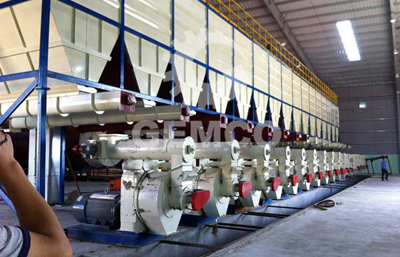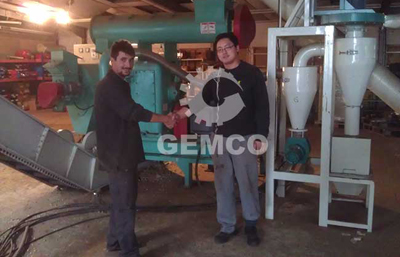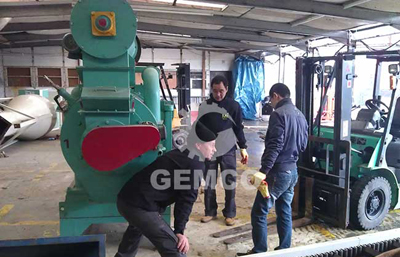Why there are cracks on wood pellets? How to solve it?
In production, there are usually abnormal wood pellets. Experienced manufacturers can figure out the reason and troubleshoot quickly. But for inexperienced or new producers, it's hard to find out the problem. In this article, I concludes 7 common abnormal situations and how to solve them. They comes from years of my working experience on wood pellet production. You can compare your situation with my description and find out the solution.
The wood pellets are bent and many cracks appears on one side
This problem arises when wood pellets are separated from the ring die or flat die. If the slicer is blunt and set far from the surface of the die, it would tear the wood pellets apart rather than cutting off them. Under this condition, wood pellets will bend to one side and have many cracks on the other side. These pellets are easy to break in these cracks, and generate much wood powders.
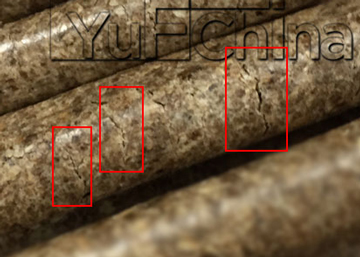
Solution:
- adjust the distance between the slicer and the die. Usually, it should be no larger than the diameter of the wood pellets.
- increase the pressure between the roller and die to improve the compression ratio, so that the wood pellets have higher density and hardness.
- make the raw materials finer to increase the compactness of the wood pellets.
Transverse cracks
These cracks appears on the cross sections of the wood pellets, but the pellets don't bend. This problem arises when you use fluffy materials with many fibers, some fibers are longer than the hole size of the die. When the wood pellets are extruded out, the swelling fibers will cause transverse cracks on the sections of the wood pellets. These wood pellets looks like pine bark from the outside.
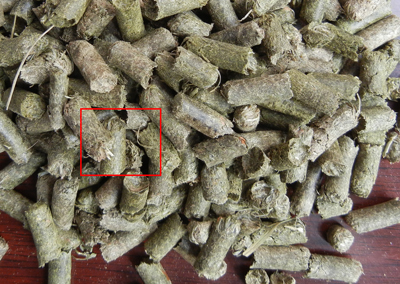
Solution:
- Increase the pressure and compression ratio of the die.
- Control the fineness of the fibers. Make sure their length is no longer than 1/3 of the diameter of the pellets.
- Reduce the production capacity and lower the speed when raw materials pass through the die, so as to increase the density and compactness of the pellets.
Vertical cracks
If the dryer is unable to dry off the raw materials evenly, they will easily split up after molding, and there will be vertical cracks on the pellets.
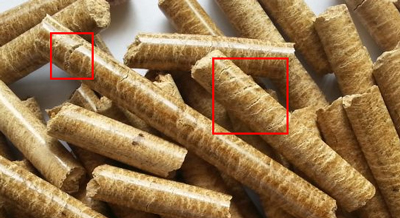
Solution:
- choose suitable dryer. Improve the drying effect.
- Replace to thicker dies with longer hole length.
Radial cracks from one point
This is because there are large fibers in the wood pellets. Raw materials mix well when they have similar size of fibers. If there are large fibers, they will affect the fusion effect. Large fibers are not easy to soften like others. Different softening degree cause different shrinkage degree in cooling, so there will be radial cracks from the large fibers.
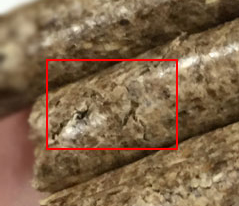
Solution:
Control the fineness and uniformity of the raw materials. Before feeding the materials, use a sifter to eliminate large sawdust particles.
Wood pellets have rough surface
If the raw materials are not fully grinded, there will be large wood particles in the powders. These large particles are unable to mix well with other raw materials during pelletizing, so the pellets looks rough.
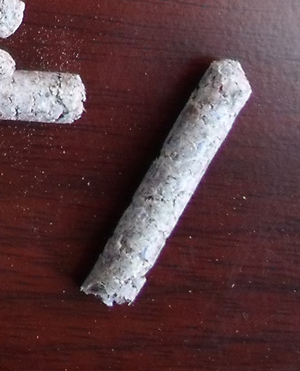
Solution:
Improve the fineness and uniformity of the raw materials.
Wood pellets have different colors
This problem is rare to see. It arises from 2 reasons:
- There are twice processed materials in the transfer bin. As we know, the pellets have to be cooled and sieved before packing. The wood powders and small pellets will be send to a mixer or the transfer bin for twice processing. They don't mix well with other materials, so the color is different.
- The holes on the die is different in smooth finish. So the pellets are under different resistance and pressure during extrusion. Besides, some holes have burrs on the side. They will damage the surfaces and cause different colors.
Solution:
- Mix the twice processed materials with raw materials together and crush them once again.
- Choose high-quality ring dies. Sanding the die holes before using.
Conclusion
In this blog, I analyzed 6 common problems in wood pellet production and provide feasible solutions. Generally, wood pellet crack problem arises from raw materials and pellet machine settings. To operate pellet machine in right way and maintain it regularly can reduce the fault and extend working life.
We receive enquiries in English, Español (Spanish), Русский язык (Russian), Français (French) and العربية (Arabic). Our professional team will reply to you within one business day. Please feel free to contact us!
